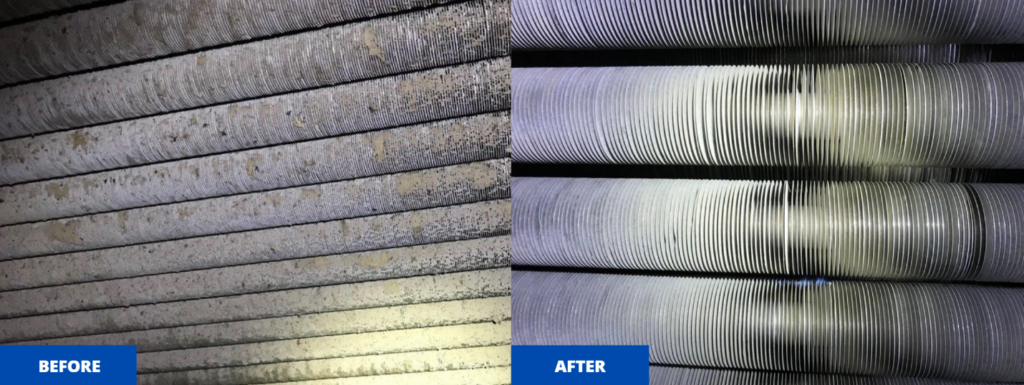
Dry Ice Blasting: An Eco-Friendly Fin Fan Cleaning Method
Dry Ice Blasting: An Eco-Friendly Fin Fan Cleaning Method

Fin fans are commonly used in the natural gas processing, refining, petrochemical, oil and gas, HVAC, and LNG industries. They are essential in the functioning of turbines, engines, and other systems. They work by forcing the air over a set of coils, which cools the air before elimination.
Fin fans require regular cleaning to ensure optimal cooling and lower production costs. The cleaning method needs to be non-abrasive and not cause any corrosion or force dirt, dust, and unwanted particles further into the system.
Dry ice blasting, a non-abrasive and eco-friendly cleaning method, is ideal for fin fans. Compared to other industrial cleaning methods, dry ice blasting eliminates years of dust and debris without damaging the delicate fins. Along with no damage caused to the system, there is also no residue, moisture, or waste left over. This prevents mould, mildew, and corrosion and eliminates the cost to vacuum residual water from the ground. Dry ice blasting can also be used year-round because, unlike cleaning methods that use water and chemicals, it will not freeze during the colder months.
Dry Ice Blasting Improves Fin Fan Efficiency
With dry ice blasting, you can improve the efficiency of fin fan coolers by up to 35% by cleaning out the built-up dust and debris and allowing air to pass through the fins.
Dry ice blasting cleans out debris and dust with no secondary waste, compared to water and foam applications that must be cleaned from the area once the job is completed.
As soon as dry ice pellets come into contact with the surface of the fin fan, the impact causes them to sublimate back into gas. This gas expands, which causes the outer coating – i.e., the dirt, dust, or grime – to loosen and break free.

How Does Dry Ice Blasting Work?
This cleaning method uses dry ice pellets, a by-product of other industrial processes made from reclaimed Liquid Carbon Dioxide (C02). Once the pellets are blasted to the contaminated surface, the resulting micro-thermal shock severs the bond between the coating of grime and the substrate. As the dry ice pellets vaporize, the force of the rapidly expanding vapour helps lift dirt from the area, leaving a clean surface. All that remains is to dispose of the substance/debris that was removed – since the dry ice pellets vaporize, there is no residual waste from the cleaning process itself.
Dry ice blasting is safe for equipment, people, and the environment. This makes it the ideal solution to be used in busy areas and workspaces.
Contact Wickens today to learn about the use of dry ice blasting for fin fan cleaning.
Wickens Dry Ice Blasting tackles the toughest jobs across Ontario, offering fire restoration, mould remediation, asbestos abatement, lead paint abatement, and more. Contact us today for a consultation or emergency service!
You Might Also Like:
Eco-Friendly Cleaning: How Dry Ice Blasting Fits into CSR Strategy
- Happy Holidays from Wickens - December 20, 2023
- Maximize Your Year-End Shutdown: The Ideal Time for Industrial Cleaning with Dry Ice Blasting - November 24, 2023
- Introducing the Viking 4000 – A Game Changer in Dry Ice Blasting - July 28, 2023

Recent Comments